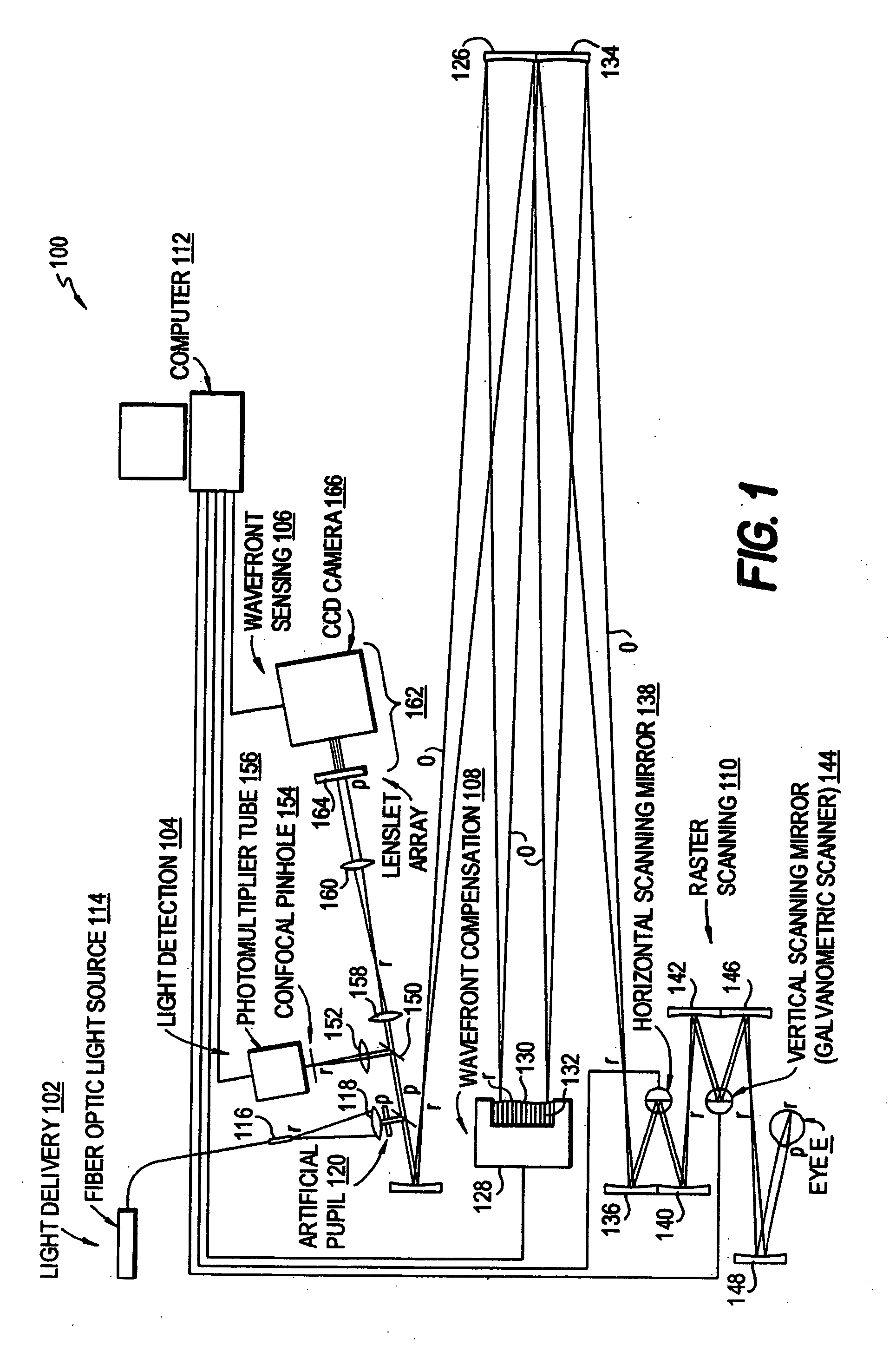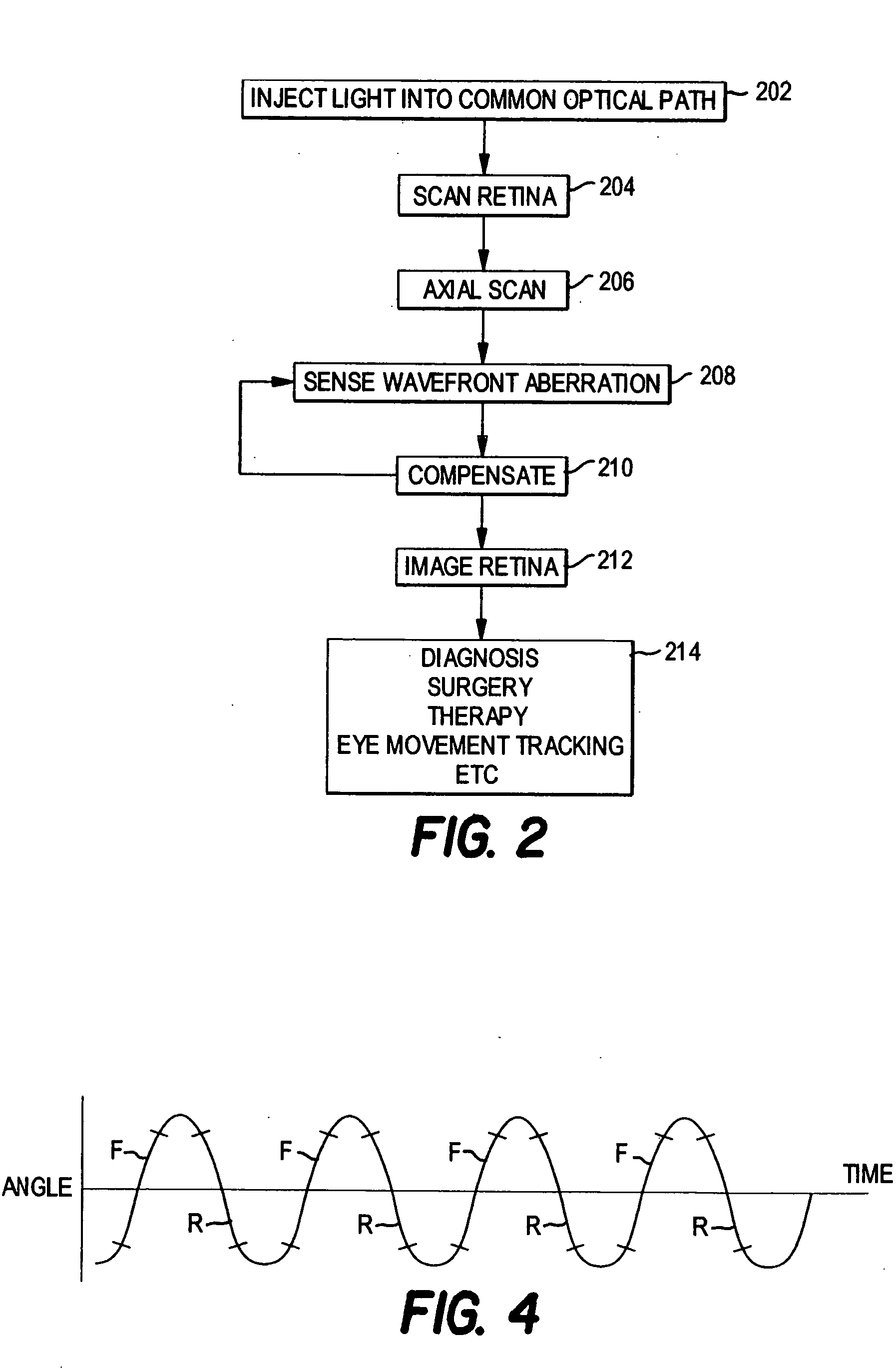Method and apparatus for using adaptive optics in a scanning laser ophthalmoscope
a scanning laser and adaptive optics technology, applied in the field of scanning laser ophthalmoscopes, can solve the problems of limited resolution at the microscopic level, propose a wavefront sensing method, and cannot apply the technology to a slo, so as to reduce aberrations of the eye, improve axial and lateral resolution, and reduce aberrations
- Summary
- Abstract
- Description
- Claims
- Application Information
AI Technical Summary
Benefits of technology
Problems solved by technology
Method used
Image
Examples
Embodiment Construction
[0051] A preferred embodiment of the present invention and variations thereof will now be set forth in detail with reference to the drawings, in which like reference numerals refer to like elements or operational steps throughout.
[0052]FIG. 1 shows a schematic diagram of the scanning laser ophthalmoscope using adaptive optics (AOSLO). In FIG. 1, points on the optical path which are conjugate to the pupil of the eye are labeled p, while points on the path that are conjugate to the retina are labeled r.
[0053] As mentioned above, the AOSLO 100 includes a light delivery section 102, a light detection section 104, a wavefront sensing section 106, a wavefront compensation section 108 and a raster scanning section 110. All five sections are under the control of a computer 112.
[0054] In the light delivery section 102, light from a fiber optic light source 114 is expanded by a beam expander 116 and collimated by a collimating lens 118. The collimated light is made incident on an artificia...
PUM
 Login to View More
Login to View More Abstract
Description
Claims
Application Information
 Login to View More
Login to View More - R&D
- Intellectual Property
- Life Sciences
- Materials
- Tech Scout
- Unparalleled Data Quality
- Higher Quality Content
- 60% Fewer Hallucinations
Browse by: Latest US Patents, China's latest patents, Technical Efficacy Thesaurus, Application Domain, Technology Topic, Popular Technical Reports.
© 2025 PatSnap. All rights reserved.Legal|Privacy policy|Modern Slavery Act Transparency Statement|Sitemap|About US| Contact US: help@patsnap.com



